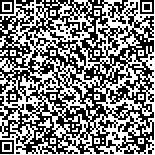| 引用本文: | 刘纪明,赵优,肖启涛,屈琦,胡又心,李郑杰,易心钰,卢伟志.亚热带城市湖泊与河流CO2气体通量特征及其影响因素.湖泊科学,2024,36(2):499-511. DOI:10.18307/2024.0227 |
| Liu Jiming,Zhao You,Xiao Qitao,Qu Qi,Hu Youxin,Li Zhengjie,Yi Xinyu,Lu Weizhi.Characteristics and influencing factors of CO2 flux in subtropical urban lakes and river. J. Lake Sci.2024,36(2):499-511. DOI:10.18307/2024.0227 |
|
| |
|
|
| 本文已被:浏览 1546次 下载 1570次 |

码上扫一扫! |
|
|
| 亚热带城市湖泊与河流CO2气体通量特征及其影响因素 |
|
刘纪明1,2, 赵优1,2, 肖启涛3, 屈琦1,2, 胡又心1,2, 李郑杰1,2, 易心钰4,5, 卢伟志1,2
|
|
1.中南林业科技大学生命科学与技术学院, 长沙 410004;2.中南林业科技大学南方林业生态应用技术国家工程实验室, 长沙 410004;3.中国科学院南京地理与湖泊研究所, 中国科学院流域地理学重点实验室, 南京 210008;4.湖南省植物园, 长沙 410000;5.湖南长株潭城市群森林生态系统国家定位观测研究站, 长沙 410116
|
|
| 摘要: |
| 湖泊、河流等内陆水体是连接陆地生态系统和海洋的“长程碳环路”的重要节点,也是温室气体二氧化碳(CO2)排放源,在调节陆地、海洋间的碳迁移转换中发挥着重要作用。相对于自然水体,城市水体因面积小、水深浅且受监测方法限制,水-气界面碳通量经常被忽略。为探讨我国亚热带城市水体温室气体排放特征,本研究以湖南省长沙市典型城市水体,包括洋湖、西湖、松雅湖、月湖4个湖泊和湘江长沙段为研究对象,分别于2022年4和10月采用光化学反馈-腔增强吸收光谱法(OF-CEAS)和扩散模型法对水-气界面CO2通量进行对比测定。结果表明,长沙城市湖泊与河流春季为CO2排放源,秋季为吸收汇,河流水-气界面CO2通量呈显著季节差异。河湖之间CO2通量在春季表现为显著差异,秋季差异不显著。CO2通量与水体溶解氧、水体总氮浓度等呈显著正相关。2种方法的CO2通量对比测定在湖泊上显著相关,但对河流而言相关性不显著。研究揭示的城市湖泊与河流CO2气体的排放特征有利于深入探究城市水体碳的迁移转化,可对全面了解全球气候变化过程和河湖湿地温室气体减排和调控提供科学支撑。 |
| 关键词: 城市湖泊与河流 CO2通量 季节变化 影响因素 |
| DOI:10.18307/2024.0227 |
| 分类号: |
| 基金项目:湖南省自然科学基金项目(2021JJ20012, 2021JJ41071)、湖南省教育厅项目(20B618)、湖南省水利科技项目(XSKJ2022068-35)、林业科技攻关与创新(XLKY202216)和湖南林业科技创新杰青培养项目(XLK202108-05)联合资助。 |
|
| Characteristics and influencing factors of CO2 flux in subtropical urban lakes and river |
|
Liu Jiming1,2, Zhao You1,2, Xiao Qitao3, Qu Qi1,2, Hu Youxin1,2, Li Zhengjie1,2, Yi Xinyu4,5, Lu Weizhi1,2
|
|
1.College of Life Science and Technology, Central South University of Forestry and Technology, Changsha 410004, P.R. China;2.National Engineering Laboratory for Applied Technology of Forestry & Ecology in South China, Central South University of Forestry and Technology, Changsha 410004, P.R. China;3.Key Laboratory of Watershed Geographic Sciences, Nanjing Institute of Geography and Limnology, Chinese Academy of Sciences, Nanjing 210008, P.R. China;4.Hunan Botanical Garden, Changsha 410000, P.R. China;5.Hunan Changsha-Zhuzhou-Xiangtan City Cluster National Research Station of Forest Ecosystem, Changsha 410116, P.R. China
|
| Abstract: |
| Inland water bodies, such as lakes and rivers, are important nodes of the "long-range carbon loop" connecting terrestrial ecosystems and oceans, as well as sources of greenhouse gas carbon dioxide (CO2) emissions. Inland water bodies also play an important role in regulating carbon migration between land and sea. Compared with natural water bodies, carbon fluxes at the water-air interface are often overlooked in urban water due to their small sizes, shallow depths, and limitations in monitoring methods. In order to explore the greenhouse gas emission characteristics of such water bodies in China, this study took four typical urban water bodies in Changsha, Hunan Province, including Lake Yang, Lake West, Lake Songya and Lake Yue, and Changsha section of Xiangjiang River as research objects. The CO2 fluxes at the water-gas interface were measured by laser-based gas analyzer that used optical feedback-cavity-enhanced absorption spectroscopy (OF-CEAS) and diffusion model in April and October 2022, respectively. Results showed that lakes and rivers in Changsha city were CO2 sources in spring but CO2 sinks in fall, and there was a significant seasonal difference in CO2 fluxes at the river water-air interface. Moreover, the CO2 flux was positively correlated with the content of dissolved oxygen and total nitrogen. The comparative determination of CO2 fluxes between the two methods was significantly correlated on lakes, but not on rivers. The study reveals that the CO2 emission characteristics of urban lakes and rivers are beneficial to the in-depth investigation of carbon transport and transformation, which can provide scientific support for the comprehensive understanding of global climate change processes and the reduction and regulation of greenhouse gas emissions in inland wetlands. |
| Key words: Urban lakes and river CO2 flux seasonal variability influence factors |
|
|
|
|